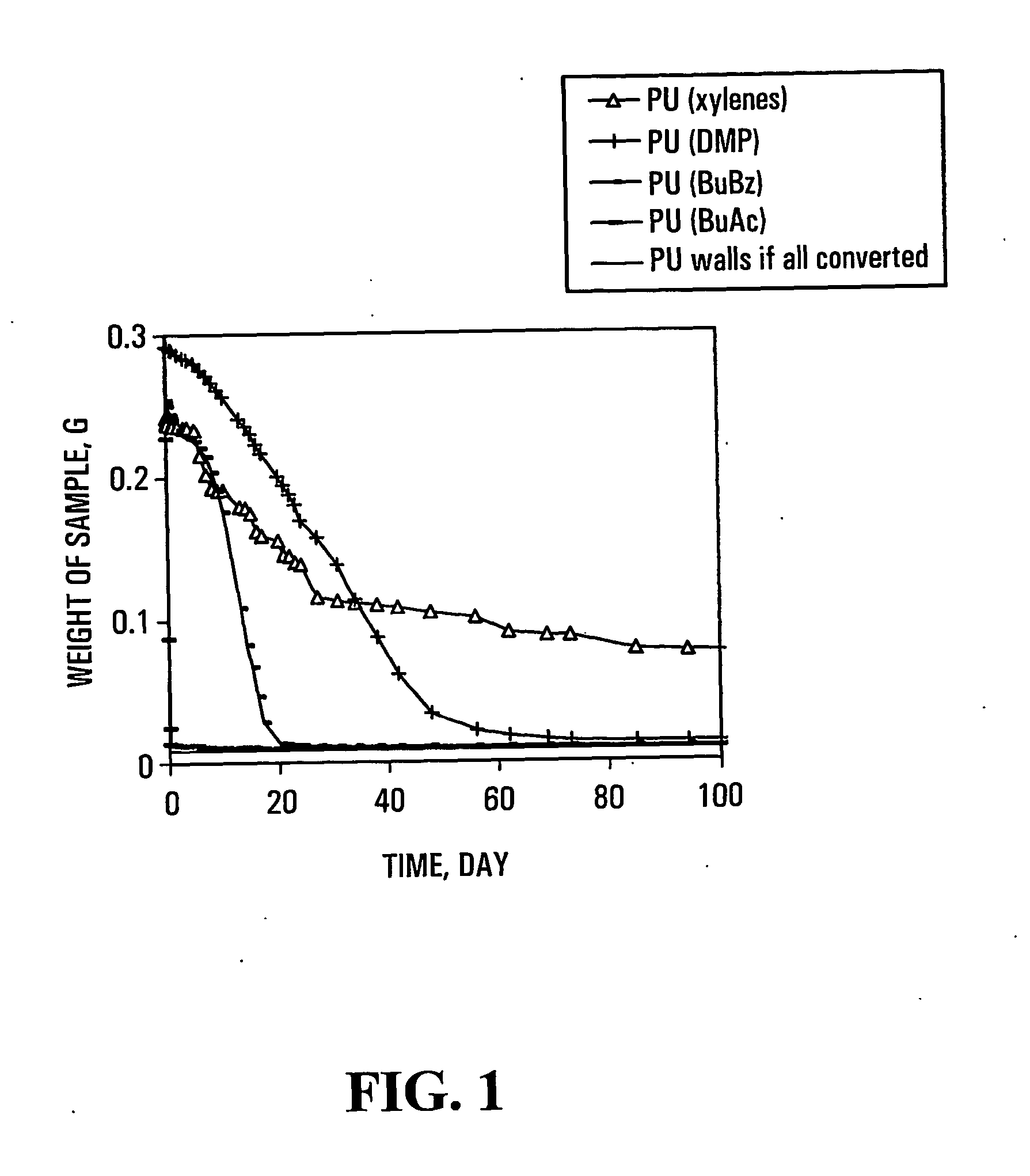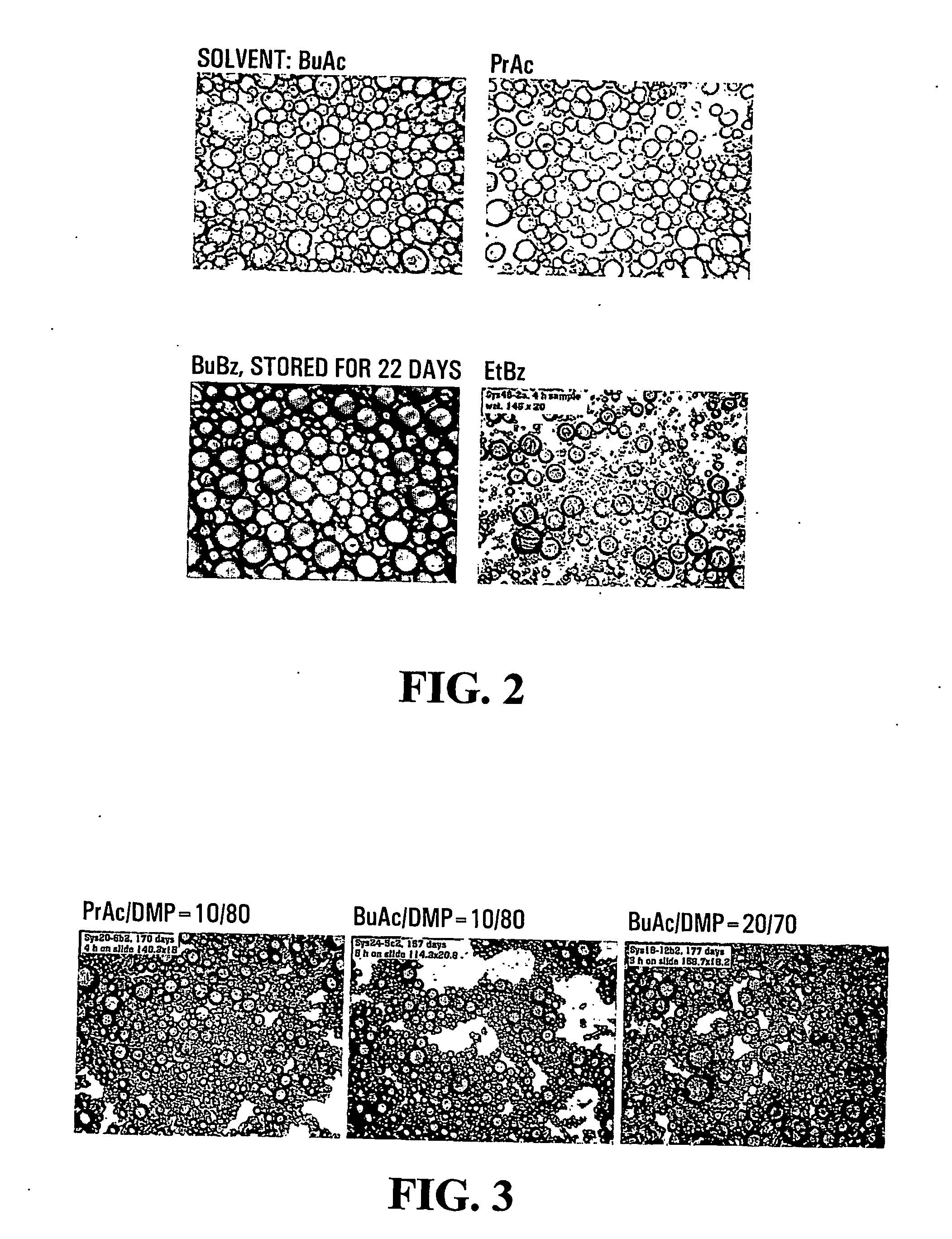Method of encapsulating hydrophobic organic molecules in polyurea capsules
a technology of organic molecules and polyurea, applied in the field of microcapsules, can solve problems such as polyurea swelling, and achieve the effect of rapid and quantitative formation of capsules
- Summary
- Abstract
- Description
- Claims
- Application Information
AI Technical Summary
Benefits of technology
Problems solved by technology
Method used
Image
Examples
examples
Formation of Polyurea Capsules by Interfacial Polyaddition
[0086] Polyurea (PU) capsules were prepared in a 1 L stirred tank reactor at room temperature. In a typical experiment, 100 ml organic solvent containing 2.5 g (10 mmol) Mondur ML was added to 250 ml distilled water in the reactor. After 5 minutes of mixing at about 400 rpm, 1.03 g (20 mmol) diethylene triamine (DETA) dissolved in 50 mL water was added into the reactor. The aqueous phase contained 0.3 g polyvinyl alcohol (PVA) and / or Tween 80 as a stabilizer or surfactant, respectively. The reaction was continued for about 4 hours, except where indicted otherwise, and the capsule suspensions were transferred into bottles.
Characterization
[0087] An Olympus BH-2 optical microscope (OM) was used to observe the appearance of capsules when they were wet, and during drying. The morphologies of the capsules were studied with an ElectroScan 2020 Environmental Scanning Electron Microscopy (ESEM) and a JEOL 1200EX Transmission Elec...
PUM
| Property | Measurement | Unit |
|---|---|---|
| boiling point | aaaaa | aaaaa |
| boiling point | aaaaa | aaaaa |
| boiling point | aaaaa | aaaaa |
Abstract
Description
Claims
Application Information
 Login to View More
Login to View More - R&D
- Intellectual Property
- Life Sciences
- Materials
- Tech Scout
- Unparalleled Data Quality
- Higher Quality Content
- 60% Fewer Hallucinations
Browse by: Latest US Patents, China's latest patents, Technical Efficacy Thesaurus, Application Domain, Technology Topic, Popular Technical Reports.
© 2025 PatSnap. All rights reserved.Legal|Privacy policy|Modern Slavery Act Transparency Statement|Sitemap|About US| Contact US: help@patsnap.com



